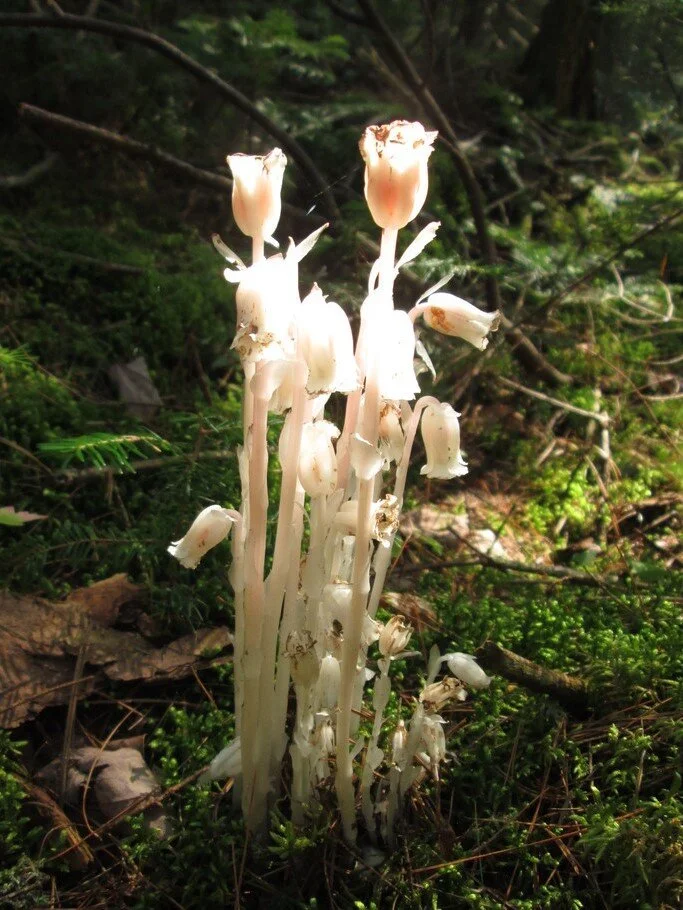Pinesap (Monotropa hypopitys) is a goofy little plant that parasitizes fungi and can often be found beneath pine trees. It is not the sap of pine trees like Daniel thought. In this episode, Bill leads the discussion about the complex relationships between pinesap, its fungal host, and the tree species the fungi has a symbiosis with. Join the guys as they get caught in a sudden rainstorm and learn about this amazing plant.
Ep. 54 - Can't Touch This: A Deep Dive Into Touch-me-not
Jewelweed. Spotted touch-me-not. Orange Balsam. It’s a plant known by many names, and, even if you don’t recognize any of them, you’ve probably popped one of its exploding seed pods. A favorite of hummingbirds and nature-lovers young and old, it’s a species with many stories to share. Listen in as the guys dive deep into the jewelweed patch, eating some seeds, trying to find the source of the “jewel” in jewelweed’s name, and getting to the bottom of the age-old claim that jewelweed is a cure for poison ivy.
Ep. 45 - In Search of A Nice Set of Pipes
Rising from the forest floor in a ghostly array of pale, slender stalks, Ghost Pipe (Monotropa uniflora), AKA Indian Pipe, is a forest floor denizen both beautiful and extraordinary. Many people mistake it for a fungus because It lacks chlorophyll. For many years, botanists argued over how it gathered nutrients. It's range stretches almost continent-wide, but its not always easy to find. In this episode, the guys hit the trail and delve into the backstory of this elusive and mysterious beauty.
Ep. 38 - Ants in Our Plants
Have you ever heard of myrmecochory? It may not pop up much in casual conversation, but this strange word is your doorway to a tiny, fascinating world of ant-plant interactions. Myrmecochory is seed dispersal by ants (don’t worry, we cover how to pronounce it in the episode), and while it may seem simple on the surface, it’s a beautifully complex spectrum of behaviors and benefits, , including some questionable ones.
Myrmecochory has long been considered a classic example of mutualism, in which two species benefit from a shared interaction, but recent research has called this idea into question. Are the ants really benefiting? Is it possible that plants are parasitizing the ants? Are the ants inadvertently ‘cleaning’ the seeds, inoculating them against harmful soil microbes? There is so much more to myrmecochory than Bill and Steve ever imagined! Join the guys as they hit the trail, exploring the seldom-seen world of ants and plants.
Ep. 29 - Jack-in-the-Pulpit, AKA George-Michael-in-the-Banana-Stand
This is the story of two guys who enter the woods looking for Arisaema triphyllum, the graceful woodland wildflower known to many as Jack-in-the-pulpit. Not only is it beautiful to behold, but this member of the Arum family has a fascinating natural history; it can switch its sex, fool midge flies, and cause botanists to have heated debates about subspecies. During the episode, Steve makes a contribution to botanical history by coming up with the best alternative common name Bill has ever heard (see title), and we wrap things up with Bill eating some of this toxic plant. Listen to the end to see if Bill dies. Enjoy!






